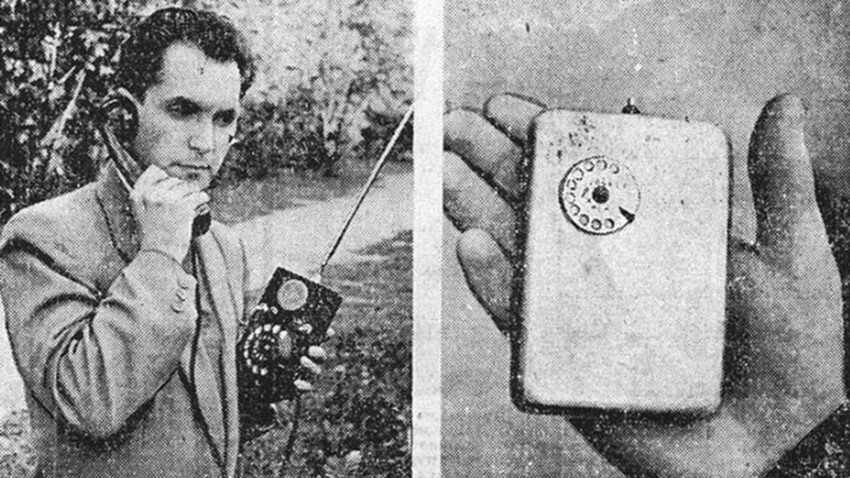
In 1953, a young Soviet radio engineer named Leonid Kupriyanovich, a recent graduate of the ‘Baumanka’ - the Bauman Moscow State Technical University, regarded as the Moscow hotbed for Soviet engineers and inventors - found himself a job. He could not even tell his family where. But, by all accounts, things went well at work because, four years later, his name echoed across the Soviet Union: He had invented the first mobile phone.
Kupriyanovich first presented his invention to the public in 1957. The experimental model of the first Soviet mobile phone, the LK-1, hardly resembled what we know as a mobile phone today. It weighed 3 kg and looked (as well as weighed) more like a large tome of an encyclopedia.

The device had a battery life of about 24 hours. It could also be recharged from a car battery. Two aerials stuck out of the mobile phone and calls were made with a rotary dial just like an old-style fixed-line telephone.
The LK-1 was not the first mobile phone in the world. From 1946, the AT&T Bell Laboratories company in the U.S. had offered a service providing hire cars with a telephone inside. The service was expensive and the quality of connection appalling, but this was 11 years before Kupriyanovich came up with his phone.
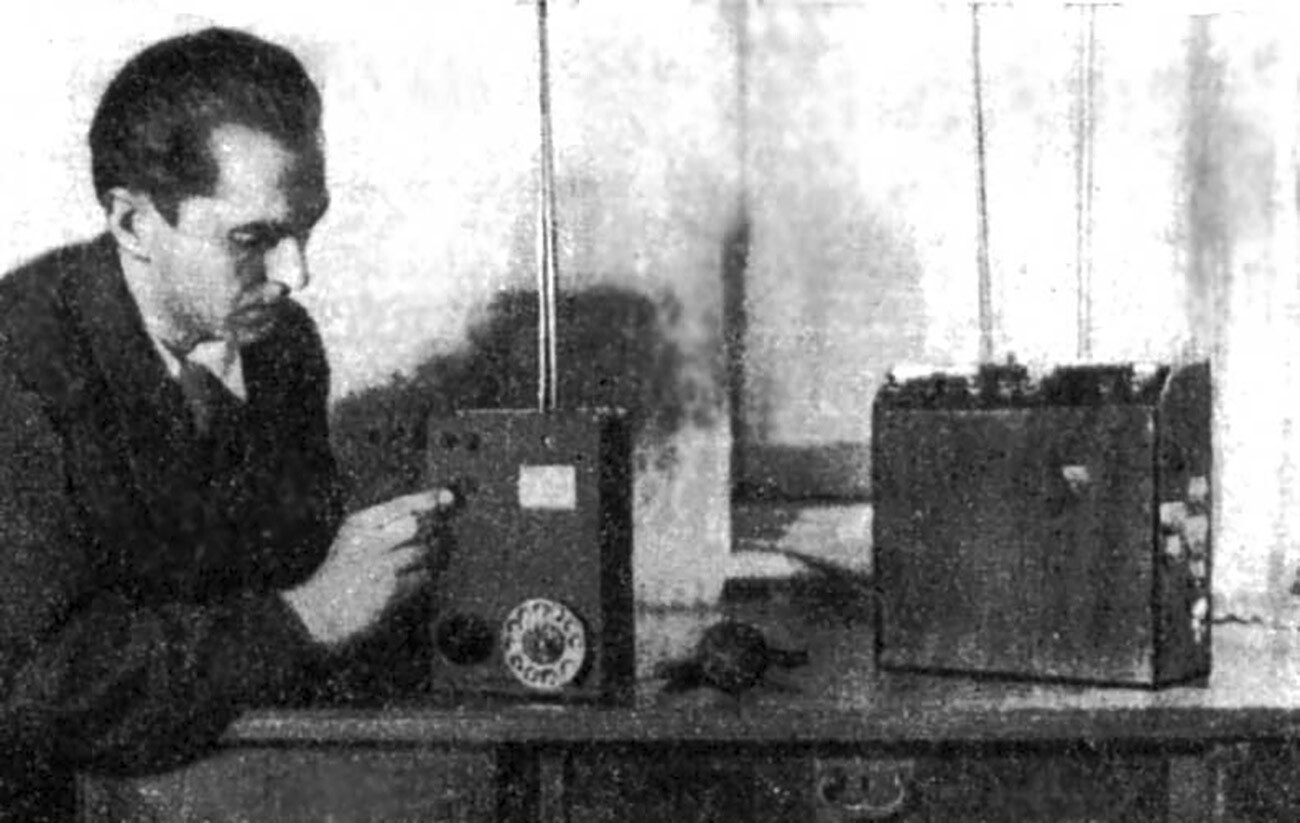
Nevertheless, people in the Soviet Union, isolated when it came to access to information, were left dumbfounded by news of the LK-1. Articles about it were published in the magazines ‘Science and Life’ and ‘Behind the Wheel’, reports about the invention were carried by the TASS and APN news agencies and the ‘Science and Technology’ newsreel series filmed a documentary report about it. In the report, a demonstration of the LK-1 initially took place at the Lenin State Farm and then an incoming call was shown in a moving vehicle and two outgoing calls in the fields and on the banks of a river.
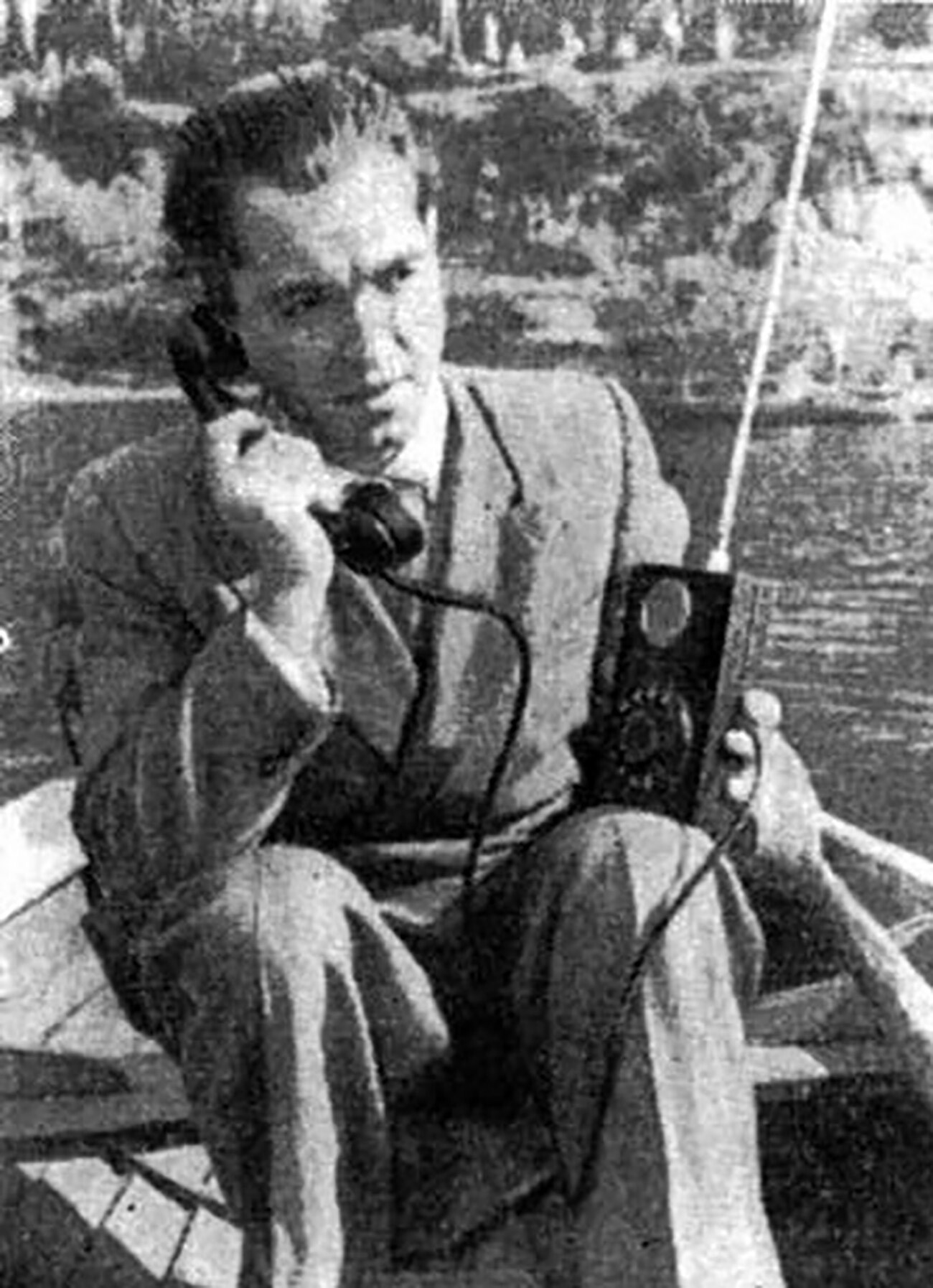
“What is it? A fairy story? A chapter from a science fiction novel? Nothing of the kind. A car phone which you can use to talk to any subscriber while on the move does exist. It was designed and built by young Moscow engineer L. Kupriyanovich,” is how the ‘Behind the Wheel’ magazine reported the story in an article titled ‘By Telephone from a Car’ in 1957.
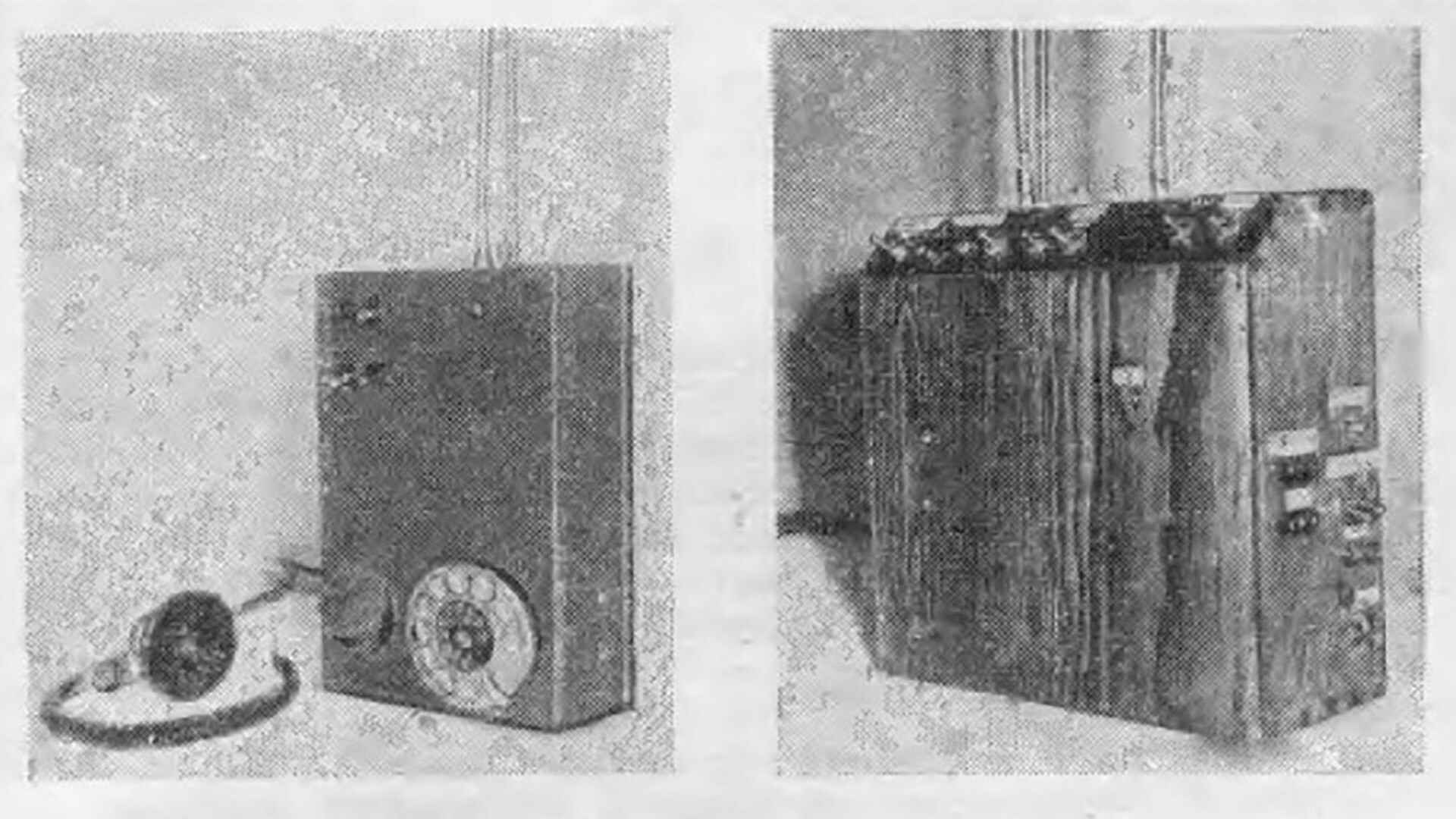
Just a year later, Kupriyanovich had perfected his experimental model, managing to reduce its weight from 3 kg to just 500 g. And, in 1961, the device, which the engineer himself now described as a radiophone, weighed around 70 g.
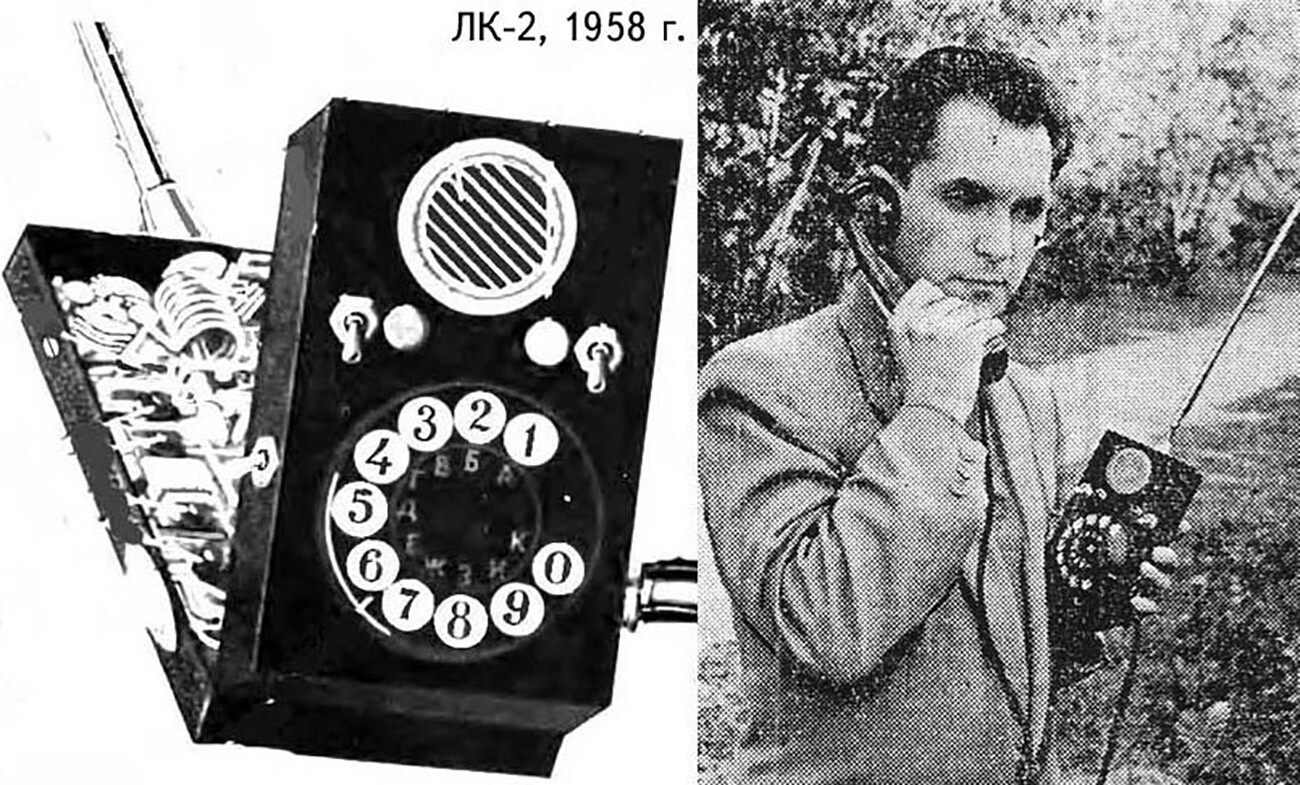
LK-2
Archive photoAccording to the Soviet press, the devices were set for a production run. The author of the newsreel report said: “In order to provide radiophone communications for a city such as Moscow, only 10 automatic telephone radio stations would be needed. The first such radio station is planned for the capital’s new Mazilovo district."
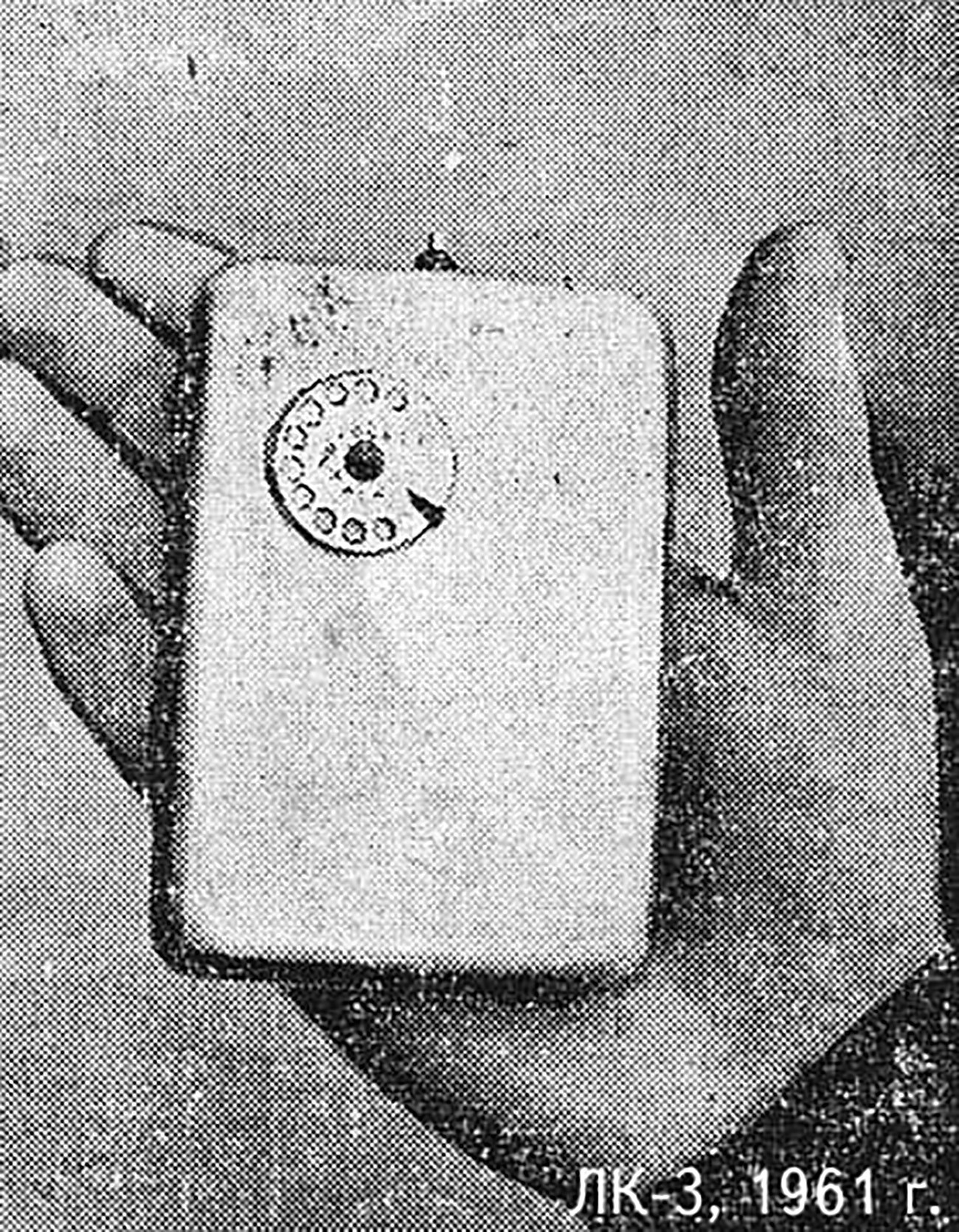
LK-3
Archive photoIn reality, things proved to be a little more complicated.
The first Soviet mobile phone was called a ‘radiofon’ with good reason. It was based on radio communications.
The device connected to a local telephone exchange via a base station called an ATR (automatic telephone radio station). The user of the device could only establish contact if he was within 20-30 km of an ATR. The connection was made in the airwaves with a fixed-frequency transmitter and receiver. That meant that an individual radio channel was needed for each such radio telephone. Even if frequencies had been taken from civilian services (police, ambulance, fire brigade) there would only have been enough channels for a very limited number of subscribers as the airwaves were limited.
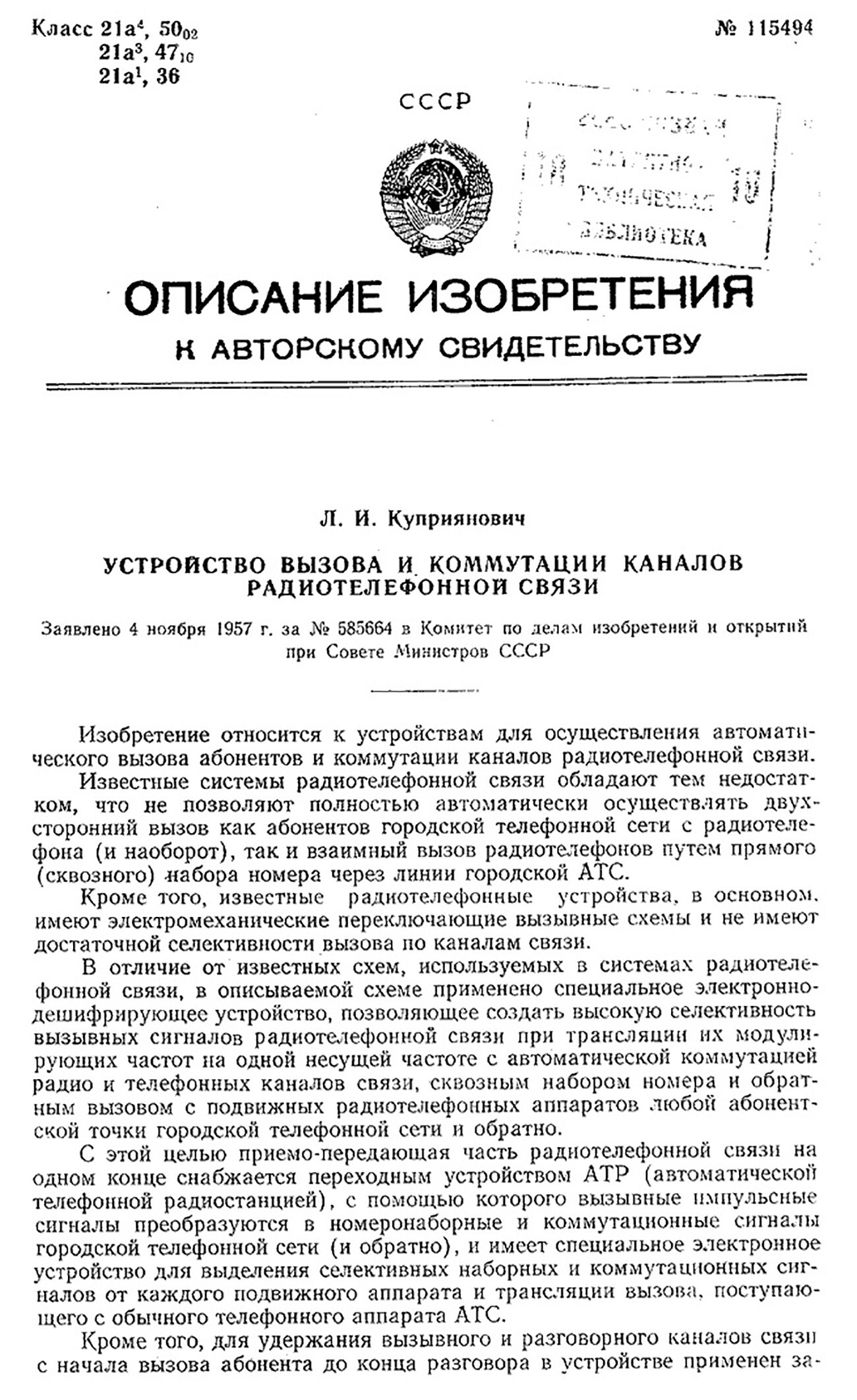
Patent №115494
patents.suIn other words, Kupriyanovich’s “mobile phone” was unsuitable for mass communications. There was no infrastructure in place for it yet, apart from experimental installations. The party elite, in those years, was content with the Altai communications system installed in official vehicles, so they soon forgot about his invention.
But Kupriyanovich didn’t lose heart and switched his focus to the development of medical equipment. He devised an instrument called the ‘Rhytmoson’ for the control of sleeping and waking schedules and he used it to promote the health of Soviet officials for a long time afterwards.
If using any of Russia Beyond's content, partly or in full, always provide an active hyperlink to the original material.
Subscribe
to our newsletter!
Get the week's best stories straight to your inbox